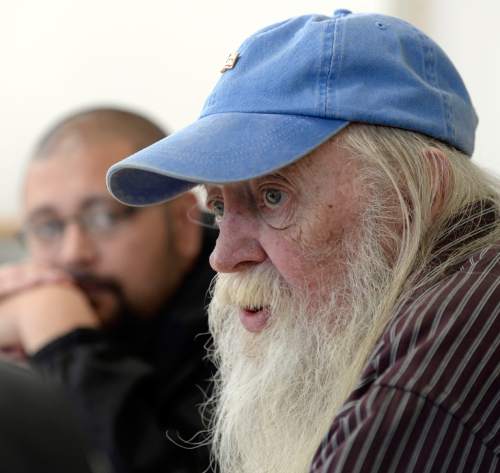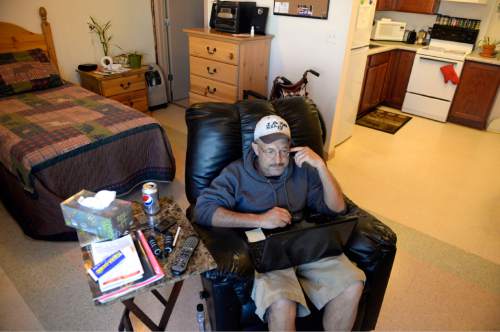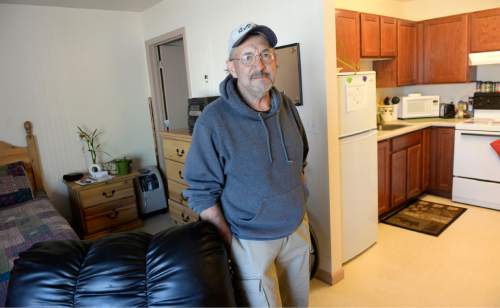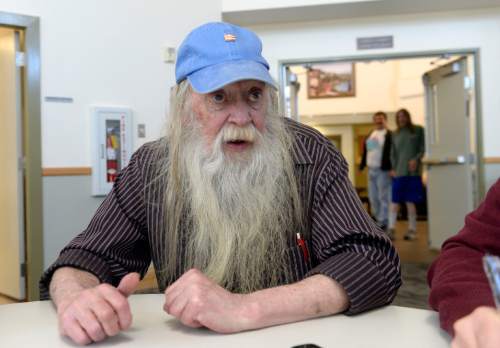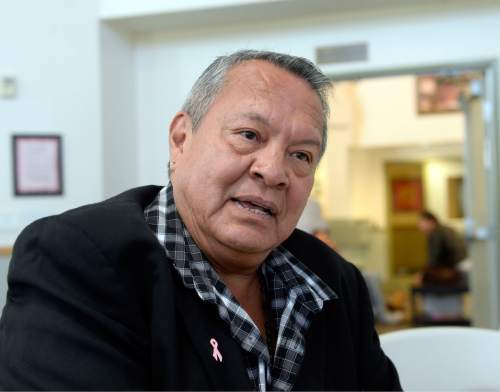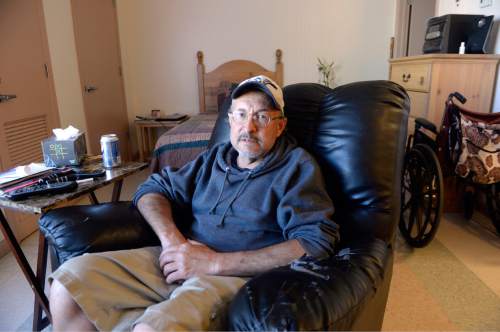This is an archived article that was published on sltrib.com in 2015, and information in the article may be outdated. It is provided only for personal research purposes and may not be reprinted.
After eight years of living homeless, Roger Smith was uneasy falling asleep without a chair blocking the door.
The 73-year-old Navy man remembers an unfamiliar sense of security after getting his own one-bedroom unit at Sunrise Metro Apartments in Salt Lake City, part of a Utah program to house the chronically homeless.
"I was a mess before that," said Smith, a South Dakota native whose struggles with anger, drinking and depression led him to life as a vagabond. Outreach workers from the George E. Wahlen Department of Veterans Affairs Medical Center first found him sleeping in a park.
Having a stable place to live these days, Smith said, "has made me a lot more at ease. The rent is reasonable, and I can afford that with my Social Security. ... I plan to stay now 'til I die."
Smith shared his story Tuesday as state officials declared victory in a 10-year effort to alleviate the most expensive and deep-rooted part of Utah's homeless crisis.
They released data showing a 91 percent decline since 2005 in chronic homelessness. Citing policies for improved tracking, swift placement in housing and addressing mental-health or substance-addiction issues, officials said yearly counts for this especially desperate population have dropped from 1,932 people a decade ago to 178 today.
At a Tuesday news conference, the state's top housing advocate said chronic homelessness is now close to what officials are calling "a functional zero."
"We have had some success," said Gordon Walker, soon-to-retire director of the state Division of Housing and Community Development. "We figured if we were going to try to end something, we would try and deal with this slice."
The chronically homeless make up 4 percent to 14 percent of all homeless Utahns, based on statistics during the past decade.
But studies have found these folks take up well more than half the government social-service dollars devoted to homeless problems, while also drawing heavily on other costly resources such as emergency-room visits, police calls and jail stays.
Addressing this segment of homeless Utahns, Walker said, has freed up homeless-shelter capacity and program funds to help others who find themselves homeless on a more temporary basis.
Elizabeth Buehler, Salt Lake City's homeless-services coordinator, said the "Housing First" approach also has helped improve collaboration and trust among dozens of government agencies and nonprofit organizations helping the homeless, while also raising awareness of the importance of housing.
"I just hope we can continue to use what we've learned from the system," Buehler said, "to help other homeless groups."
The government defines homelessness as chronic when people have been on the streets for more than a year at a time, or homeless four times in the past three years. They also must have been reliably diagnosed with a major debilitating condition such mental or physical illness, alcoholism or drug dependency.
The Housing First approach has been to give the chronically homeless homes without strings attached, resulting in overall savings of up to $8,000 per homeless person, according to state estimates. In fact, Utah officials at varying levels of government and the private sector have together brought nearly 2,200 housing units online across the state since 2005 for this purpose, Walker said.
"We're excited," he said, "because we see lives changing."
Although the chronically homeless sometimes face a difficult adjustment to having a home, Walker said, upward of 80 percent of those placed in supportive housing remain there over time.
The Housing First program has drawn laudatory national coverage in recent weeks, with glowing articles in such media outlets as The Washington Post, The New Yorker magazine and television's "Daily Show with Jon Stewart."
But the cheers seemed premature and counterproductive Tuesday to a leading member of the Pioneer Park Coalition, a group of Salt Lake City business owners and civic leaders formed to address crime and vagrancy in and around the downtown park, where the homeless often gather.
"Focusing on a sliver of the problem confuses the whole situation," said Tiffanie Provost, a downtown business owner and coalition board member.
"Regardless of whatever statistics the state wants to put out there, the area has deteriorated in many ways," she said. "There is no one living or working in the Rio Grande Depot area who does not believe the situation is more dangerous now."
Indeed, while the numbers of chronically homeless have dropped since 2005, overall homeless counts in Utah — including those for homeless families — have remained steady or risen slightly during the same time period, according to the state's own data.
In fact, Walker said, "two years ago all of a sudden there was a blossoming. And nobody really knows why. That is an issue everyone is struggling with, but they are not chronically homeless."
Walker said his department makes no claims about ending all homelessness, a goal that he acknowledged "is far beyond any level of resources we will ever have."
Twitter: @TonySemerad


